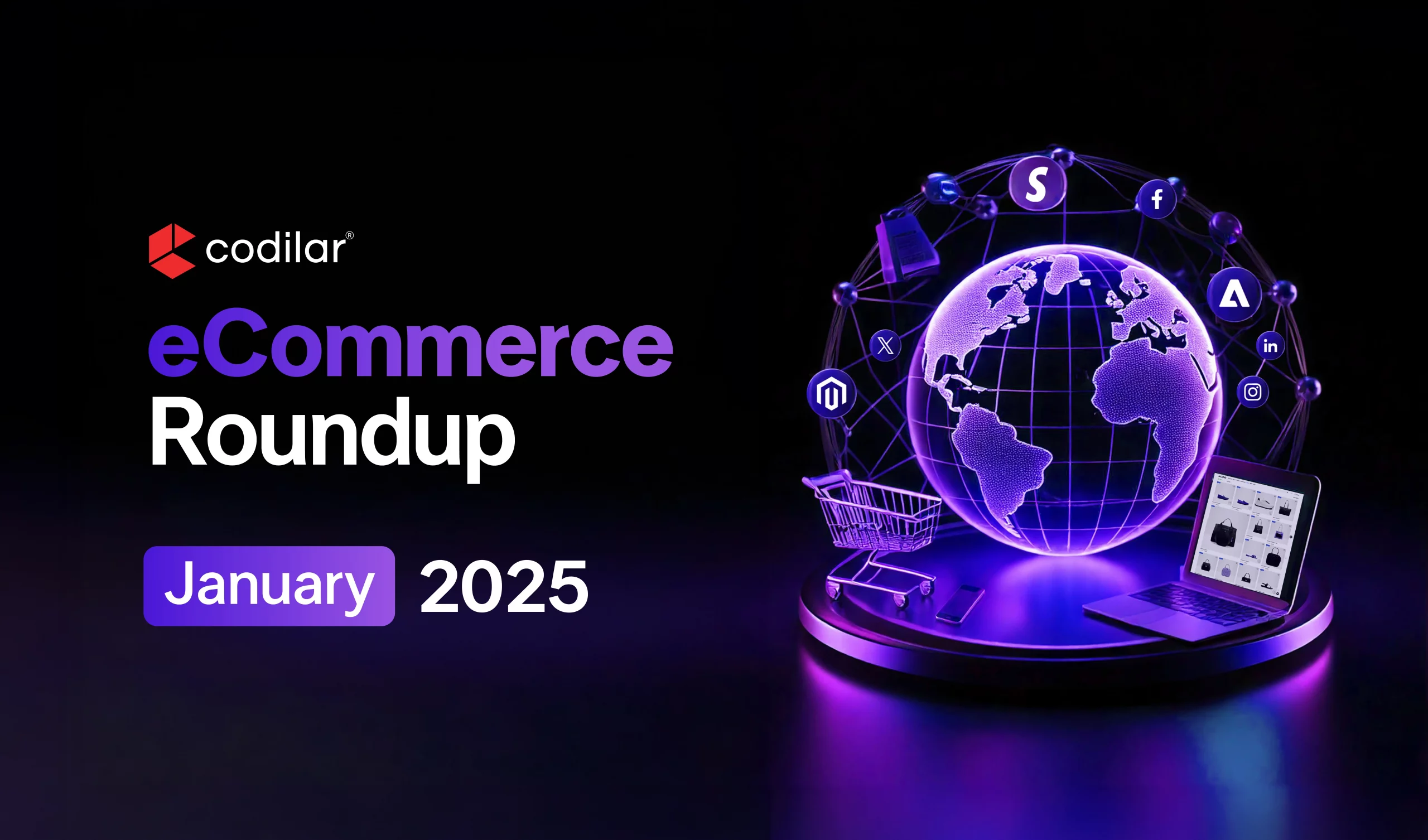- Learn about Common Security Issues In Magento Stores
- Top Thirteen Magento Best Practices to Keep Your Store Safe
- FAQs
Magento platforms are popular among eCommerce business owners worldwide due to their power and flexibility. However, this popularity makes them a target for cyberattacks and data breaches. To safeguard your store and provide a secure shopping experience for your customers, it is important to implement Magento security best practices.
Common Security Threats Faced By Magento Store Owners
Understanding potential threats is the first step toward protecting your online store. Here are some of the most common security challenges faced by Magento store owners-
1. Brute Force Attacks
Hackers use automated tools to guess login credentials through trial and error. Weak passwords and usernames abet these attacks.
2. Cross-Site Scripting
Attackers inject malicious scripts into web pages that execute when users access those pages, possibly compromising accounts and stealing customer data.
3. SQL Injection
Vulnerabilities in your database queries allow attackers to manipulate data, access sensitive information or take control of the site.
4. Phishing Attacks
Cybercriminals impersonate trusted entities, tricking store admins or customers into revealing store-sensitive data such as passwords, customer payment details, etc.
5. Malware Injection
In some cases, malicious code can be injected into Magento’s core files or third-party extensions leading to compromised data and website functionality.
6. DDoS (Distributed Denial of Service) Attacks
These attacks overload servers with traffic, causing downtime and disrupting operations.
7. Outdated Software Exploits
Running older Magento versions or extensions with unpatched vulnerabilities can lead to exploitation by attackers.
Best Practices To Enhance the Security of Your Magento Store
1. Always Use Magento’s Updated Version
Magento regularly releases updates that address previous versions security vulnerabilities and enhances overall stability. Running an outdated version exposes the store’s shortcomings, making it an easy target for hackers. Make it a priority to update your Magento installation as soon as the security patches are released.
Test the updates in a staging environment to ensure compatibility with custom themes, extensions, and configurations before applying them to your live store.
2. Use Strong Usernames and Passwords
Many business owners still tend to use “admin” as their username or have commonly used passwords making them susceptible to brute force attacks. Ensure that you have a unique username and password that is a combination of uppercase and lowercase letters, numbers, and symbols.
In addition, avoid using passwords such as names or birthdays which can be easily learned. Make use of a password manager to securely store credentials and regularly update your passwords to minimize risk further .
3. Enable a Two-Factor Authentication (2FA)
An additional layer of security reduces the risk of your sensitive information from being compromised. With two-factor authentication, you add a second verification layer, such as a code sent to your mobile device or email.
Even if attackers obtain your password, 2FA can alert you and prevent unauthorized access to your admin panel. Magento has built-in 2FA features and extensions, providing a simple yet powerful way to protect your store.
Implementation:
- Log in to your Magento Admin Panel → Stores → Settings → Configuration, select Security → 2FA
- expand the General section, choose a 2FA provider
- Follow configuration instructions, and click Save Config
4. Restrict Admin Access
Restricting admin access to your Magento admin panel significantly reduces the attack surface. Start by changing the default /admin URL to a custom path, making it harder to predict. Next, implement IP whitelisting to allow admin access only from specific IP addresses. Make use of Role-Based Access Control to assign permissions based on user roles, ensuring that employees and contractors only access the areas they need.
Implementation:
- Edit .htaccess (for Apache servers)
- Go to Admin directory and open .htaccess
- Add:
RewriteCond %{REQUEST_URI} ^/(index.php/)?admin(.*) [NC]
RewriteCond %{REMOTE_ADDR} !^xx\.xx\.xx\.xx
RewriteRule .* - [F,L]For custom admin URL, use the following code –
RewriteCond %{REQUEST_URI} ^/(index.php/)?custom_admin(.*) [NC]
RewriteCond %{REMOTE_ADDR} !^xx\.xx\.xx\.xx
RewriteRule .* - [F,L]- Edit .nginx.conf (for NGINX Servers)
- Open the nginx.conf from admin location
- Add:
location ~* ^/(index\.php/admin|admin) {
allow xx.xx.xx.xx;
try_files $uri $uri/ /index.php?$args;
location ~* \.php$ { try_files /dummy @proxy; }
deny all;
}For Custom Admin URL, use the following code –
location ~* ^/(index\.php/custom_admin|custom_admin) {
allow xx.xx.xx.xx;
try_files $uri $uri/ /index.php?$args;
location ~* \.php$ { try_files /dummy @proxy; }
deny all;
}
5. Install SSL Encryption
SSL (Secure Sockets Layer) encryption ensures that all the data transfers between your store and the users are secure and protected from any form of interception. This is essential to create a safe and reliable user experience for your buyers. It safeguards important information like login credentials and payment details. It is important to secure your entire site with HTTPS- not just checkout pages, as search engines like Google prioritize SSL-secured websites in their rankings.
Implementation:
- Install SSL Certificate: Obtain and install SSL certificate on your server.
- Enable SSL in Magento
Go to Stores → Settings → Configuration → and set Use Secure URLs in Frontend and Admin to Yes - Update base URL: Change base URL to https:// → Save Config
- Test the SSL Setup
6. Back-Up Your Store Regularly
An efficient backup strategy is your safety net in case of a security breach, server failure or operational oversights. Automating backups help ensure that your store is backed up periodically and the data is stored in secure offsite locations. Make sure your backups include critical components such as your database, files, and configurations, so you can quickly bring back your store to its operational state.
To enhance security, consider storing your backups in Amazon S3. S3 is a scalable cloud sto0rage solution for off-site storage for files and media, to keep backup data protected and accessible for restoration.
7. Monitor and Log Activities
Magento provides built-in logging tools to track admin actions and system activities. Regularly review these log activities for unusual patterns, such as multiple failed login attempts, sudden changes in system files, or modifications in user permissions. Monitoring activities allows you to detect potential security breaches early and act swiftly to prevent the attack.
8. Secure Your Server
A secure server important for Magento store protection. Implement a Web Application Firewall (WAF) to prevent cyberattacks such as SQL injection and XSS attacks. You can further disable directory indexing to prevent attackers from viewing sensitive files and directories. Ensure your server software is regularly updated to patch vulnerabilities.
9. Employ Security Extensions
Magento’s extensive marketplace offers security-focused extensions that enhance your store’s safety. Consider adding tools like malware scanners, firewalls, and real-time monitoring systems. These extensions can help detect and prevent threats before they strike. Ensure you use only reputable, regularly updated extensions to avoid having vulnerabilities.
10. Secure Your Payment Gateways
One of the most common reasons for security breaches is the use of unsafe payment gateways. Always choose PCI DSS compliant gateways. This ensures that they adhere to security standards for handling card data. Prioritize features such as tokenization, encryption, and fraud prevention. Make sure you research the reputation of potential gateways to understand their experiences with security,reliability and customer support.
How to choose PCI-Compliant payment gateways to ensure secure transactions.
- Install an SSL certificate and ensure all payment pages use https:// for encrypted data transmission
To configure payment gateways-
Log into the Admin Panel → Go to Stores → configuration → Sales → Payment Methods - Select your Payment gateways and securely setup credentials
- Enable additional security measures such as fraud detection tools, limited payment methods
- Monitor transactions and update Gateways and extensions regularly.
11. Prioritize a Security-Optimized Hosting Solution
A secure hosting environment forms the foundation of your Magento store’s security. Look for reputable providers that are compliant to security standards like PCI DSS and SOC 2 and offer security measures like firewalls, Intrusion Detection Systems (IDS), regular security audits, and secure data centers.
Additionally, consider hosting options based on your needs- shared hosting for smaller stores, VPS for more control and security, dedicated servers for maximum security, or cloud hosting for scalability and flexibility.
12. Enhance Security with Magento’s Built-In Scan
The Magento Security scan, provided by Adobe Commerce, is a free tool that helps merchants identify and address potential security vulnerabilities in your Magento store. The tool performs automated scans to detect malware, security issues, and missing updates, offering detailed reports with actionable insights. With scheduled scans and consistent monitoring you can safeguard your store and your customers’ data.
Implementation:
- Log Into Your Magento Panel
- Go to Security Scan section in your account dashboard
- Click on Add Site and enter your store’s URL
- Verify Ownership
- Download the verification code provided for Magento
- Add the code to your store’s HTML
- Complete verification in your Magento account
- Set a regular scanning schedule or run scans manually as needed
- Review scan reports
13. Conduct Routine Security Audits
Routine security audits can help mitigate risks early. These involve reviewing your server and hosting security to ensure compliance with latest protocols, verifying that Magento core files and extensions are up to date, inspecting permissions to prevent unauthorized access, monitoring logs, and using tools like vulnerability scanners to detect potential threats.
- Review ADMIN user accounts:
Go to Systems → Permissions→ All Users in Magento Admin Panel
Check for inactive or unauthorized accounts and remove them. - Audit Admin Roles and Permissions:
- Navigate to System → Permissions → User Roles
- Ensure users only have access to necessary functions.
- Update Magento Core and Extensions
- Check server logs
- Run vulnerability scans
- Verify SSL
- Schedule regular audits
Conclusion
Safeguarding your Magento store is an ongoing process that requires an alert team and stringent preventative measures. By implementing these best practices you can protect your online store better while building customer trust. A secure store not only protects data but also helps develop long-term customer loyalty and success.
Ready to strengthen your Magento store? Let our team of Magento experts guide you.










